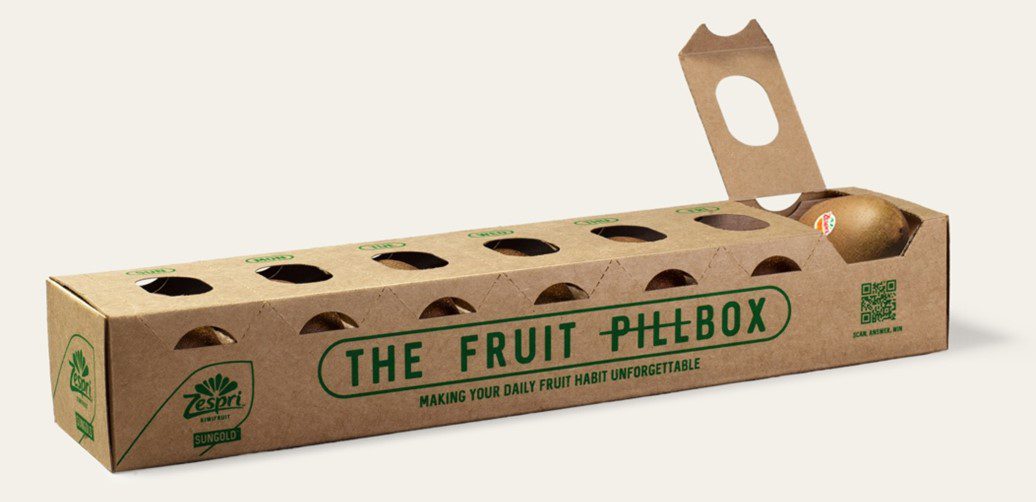1 March 2024 — A Zespri-commissioned survey of over 500 Singapore residents showed an overwhelming majority (93%) want to eat more fruits, but over one-third do not because they simply forget [1].
Zespri BB #:141270 understands that integrating healthier eating choices into daily routines can be challenging and inspired by pillboxes that remind people to take their medicine and supplements daily, Zespri just launched The Fruit Pillbox, its limited-edition packaging designed to encourage consumers to eat a kiwifruit daily.
“We all recognise the importance of eating fruits as part of a healthy diet, and yet our survey found that more than 50% of consumers in Singapore do not consume fruits every day. Inspired by Nudge Behavioural Economics, The Fruit Pillbox aims to encourage a positive change in the eating habits of consumers, making fruit consumption a seamless and enjoyable part of their daily routine,” said Ng Kok Hwee, General Manager, Global Marketing, Zespri. “The initiative is aligned with our purpose to help people, communities, and the environment thrive through the goodness of kiwifruit.”
The Fruit Pillbox features seven compartments labelled Monday through Sunday, each containing a Zespri SunGoldTM kiwifruit. This design is inspired by Nudge Theory, offering subtle reminders for healthier choices [2].
“The basis of Nudge Theory is to gently push, subtly influence, or steer behaviour towards encouraging positive change in both people and society. Our brains need more subtle, repeated, clear information for any permanent behavioural change to happen, which can form a positive habit,” said Dr Karen E Waldie, Professor, School of Psychology, University of Auckland.
“The Fruit Pillbox leverages the concept of routine and habit by providing a structured and visually appealing format that literally looks like a pill organiser. The segmentation of kiwifruit into individual compartments for each day of the week acts as a clear and tangible cue for people to incorporate kiwifruit consumption into their daily routine.”
Starting 2 March, Zespri’s limited-edition The Fruit Pillbox will be trialled at four FairPrice Finest outlets, namely, Bukit Timah Plaza, Junction 8, Thomson Plaza, and Waterway Point.
While The Fruit Pillbox is offered in limited quantities, Zespri kiwifruits are readily available in the usual punnets across all FairPrice stores. A Zespri SunGold kiwifruit is naturally high in Vitamin C, and each contains more than 100% of daily Vitamin C requirements. Zespri kiwifruits are also low in glycaemic index and a source of folate.
Leroy Seow, Deputy Head of Products, FairPrice Group, shared, “As Singapore’s largest retailer, we are committed to providing our customers with access to high-quality fresh fruits at affordable prices. We welcome this innovative packaging pilot at our selected FairPrice Finest stores and look forward to partnering with Zespri in delivering fresh produce for our customers.”
Zespri will conduct a follow-up survey through a QR code printed on The Fruit Pillbox. Results of the survey, to be released towards the end of March, will be compared against the findings in the initial survey. “We want to assess the effectiveness of our unforgettable packaging innovation in nudging behavioural change and boosting kiwifruit consumption among Singapore consumers,” added Ng.
The Fruit Pillbox is meticulously crafted to be inclusive and sustainable, ensuring that everyone will be able to enjoy the goodness of kiwifruit. The Fruit Pillbox is printed using environmentally friendly, vegetable-based inks. In a commitment to inclusivity, the days of the week are also imprinted in braille, making it accessible to the visually impaired. The environmentally conscious design extends to the material itself, as the packaging is crafted from 100% recyclable materials. This aligns with Zespri’s broader packaging goals and commitment to achieving 100% recyclable, reusable or compostable packaging by 2025.
[1] Zespri commissioned StickyBeak to conduct a survey of 504 Singaporeans aged 18-55+. More information available in survey infographics here.
[2] Behavioral economics, explained



